The Portuguese Railway: 160 years and 160 more
Posted: 14 December 2016 | | No comments yet
Mario Fernandes, Road and Rail Planning Director at Infraestruturas de Portugal, looks back at 160 years of the Portuguese railway and discusses future plans and goals.
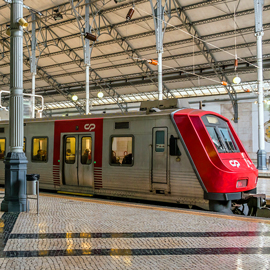

The first train journey in Portugal took place 160 years ago, on 28th of October 1856 – to be precise 31 years after the United Kingdom saw its own inaugural train journey take place. It was an eventful journey to say the least, according to the memoires of the Marchioness of Rio Maior. Her detailed description of this event was based on the story told by her father who was one of the passengers.
“The engine, needless to say one of the most primitive (it resembled an enormous bottle), was not strong enough to pull all the carriages which were coupled together, and as a result they detached from the train along the way. (…) The carriage carrying Cardinal Patriarch and canons was left in Sacavém, and another one, filled with dignitaries, was left stranded in Póvoa. (…) These unfortunate people, abandoned along the line at the whim of a frail high speed traction, only arrived in Lisbon in the middle of the night, after many an adventure which became the talk of the town for months to come. There were even people with torches out on the lines looking for the so-called shipwrecked people of progress.”


It is curious to note that the inaugurated section, between Lisbon and Carregado, was initially built in standard gauge, which only later was substituted by Iberian gauge due to developments registered in Spain.
A lot has happened since then! Technical issues were solved, the network expanded and the railways have been associated with many significant events of national importance during the past one and a half centuries. The railways allowed for important news to get to the countryside, such as the end of the monarchy and implantation of the Republic, in 1910; they were the scene of the assassination of one of the presidents of the first republic, in 1918; emblematic journeys that had a decisive impact on the democratic culture of the country were made possible, such as Humberto Delgado’s journey in 1958, at the height of Portugal’s dictatorship. Without doubt, the railways were a decisive contributor to progress, and to regional and social cohesion. However, the 1950s were years of change, even though the railway network reached its maximum extension at this time.
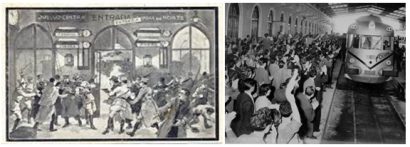

Indeed, the second half of the 20th century witnessed the widespread use of the car, also in Portugal, especially in the 1970s when political change took place. Up until then the car had only been within the grasp of a tiny wealthier elite. The car was an important factor of social status which no one wanted to go without! Just like the rest of Europe, Portugal did not escape the resulting downturn of the railway.
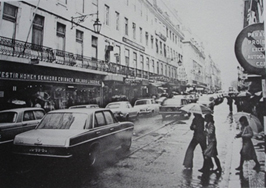

From the 1980s onward, Portugal witnessed both a marked prevalence of the road as a means of transport, and at the same time the ageing of the railway infrastructure and rolling stock itself. Railway demand decreased and the quality of the service became poor (and vice-versa), leading to an investment decrease and a vicious cycle which, in many cases, culminated in the closing down of railway sections. Out of the 3.750 km of railway lines in service in the 1950s, today we have 2.630 km.
Nowadays, it is unanimously accepted that the Portuguese railways need to undergo a process of modernisation, which will equip them with adequate working conditions to meet current demands and also prepare them for the future.
Though what modernisation is that? What decisions can be made today which guarantee the foundations for the next 160 years? What role should the railways have in answering the energy and environmental crisis? What investments can ensure that the vicious circle of decline is broken and which are, simultaneously, financially viable in a context of severe economic restrictions?
In attempting to answer these and other questions related to alternative means of transport, as well as their interconnection, a work group was created in 2013 with a wide representation within the mobility sector. This group brought together infrastructure managers, public freight and passenger transport operators, trade associations, carriers (cargo owners), regulators, the agency for promoting investment, logistics operators and business associations.
The main current constraints were immediately identified: the level of degradation of the infrastructure which forces trains to slow down and, consequently, results in slow commercial speeds; the technical obsolescence and lack of uniformity, mainly regarding signalling systems and the electrical supply; the existence of a considerable part of the railway network which is not electrified; limitations to the maximum length and weight of trains; inefficient connections with the main ports and logistics centres in Europe; and some cargo restrictions in parts of the network with the highest demand.
Based on the identified constraints, a set of recommendations aimed at the improvement of the infrastructure was produced together with a selection of the modernisation projects which should be carried out. Other recommendations not related to infrastructure were also drafted, most of which do not entail financial investment, and instead involve changes in norms or legislation.
Let us first address the recommendations which do not entail investment or, at least, do not require major investment. As far as non-infrastructural recommendations are concerned, the following stand out: the harmonisation of maximum load limitations in accordance with European baseline values; the flexibilisation of the tariff matrix, to boost market efficiency by the various agents and a distinction between freight and passenger transportation; better coordination between the infrastructure manager and operators; improvement of the interrelation between different means of transport as regards timetables and pricing; better integration of the Portuguese and Spanish railway networks; concentration of freight terminals under the jurisdiction of the infrastructure manager (already completed); and the drawing up of a contract between the Portuguese State and the infrastructure manager (since concluded and in force). Thus, non-infrastructural recommendations involve an ongoing process which essentially depends on the sector’s organisational ability and on political resolve.
The recommendations aimed at improving the infrastructure led to a plan called FERROVIA2020, which is now fully underway. This plan, which is in line with today’s community financing framework and has a total investment of around €2,000 million until 2020, gives priority to the conclusion and modernisation of international routes which cross the country, as well as the modernisation of the network’s backbone – the North/South route between Lisbon and the Galiza border in Valença.
In all cases, double gauge monoblock concrete sleepers will be used, thus allowing gauges to be changed quickly and inexpensively, whenever necessary.
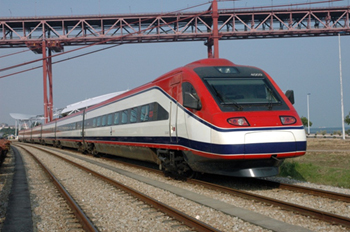

The implementation of the FERROVIA2020 plan is part of the path towards achieving the major strategic goals: “The rail network will tend to be fully electrified to power 25 kW, equipped with control-command and signaling systems according to the European standard (ERTMS / ETCS) and the main freight corridors, fully interoperable within themselves and with Spain, will be prepared for trains to travel with 750m length and 1,400 tons of cargo in simple traction.”
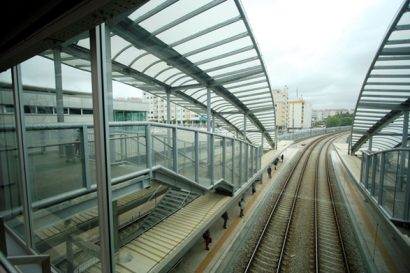

It seems clear that we live at a key moment in time. The solutions we advocate are complex and ambitious, but also necessary! As with all complex situations, we need to simplify our approach, and this is why I dare suggest two keywords as regards to the modernisation strategy of Portuguese railways: demand and interoperability. If we focus on these two concepts we will do what needs to be done and no more than that!



